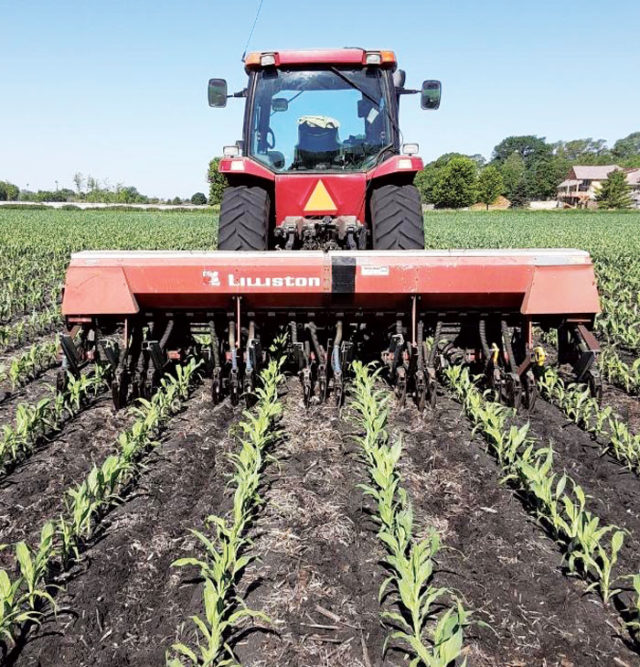Interseeding is an excellent way for growers to seed covers early enough to get a strong stand started while cash crops are still growing. Austin Carlson, a soil health technician with the South Dakota Soil Health Coalition, discusses how interseeding can be a viable practice.
Q: Why should growers not be intimidated by interseeding cover crops into a growing crop?
A: There is some concern, because it’s a big step to seed different plants in with your cash crop, but the biggest thing I recommend is to just start small. By just doing a little bit each year, the producer can get comfortable with the practice and learn valuable methods to improve interseeding. I’ve talked to quite a few producers who have jumped in with both feet and seeded whole fields, and sometimes it hasn’t worked out as well as they’d hoped.
There’s a couple of different ways you can seed the cover crop in with any cash crop. It might be early or late in the season, such as when the plant is drying down and more sunlight is contacting the ground. Earlier in the season is when people get the most nervous because they’re not used to seeing a second crop growing out in the field.
Q: When should the cash crop be interseeded with cover crops?
A: This can vary a little bit depending on the different crops, but the most common would be interseeding into corn. If the producer is looking to get the maximum growth of a cover crop and have diverse cover crops — both warm season and cool season species — I recommend interseeding early in the growing season when the corn is approximately V3-V6 growth stages. After the V6 stage, the growing point of the corn is out of the ground, so if you run over the corn, it’s going to die. By interseeding a little earlier, you minimize the risk of killing the corn.
You also have the most sunlight opportunity to get those cover crop seedlings growing right away. Later in the season, I would say hold off until the sunlight reaches 50% down to the ground between the corn rows. Otherwise, the canopy is too shaded and those seedlings won’t have a very good start.
Q: Which cover crop species work best for interseeding?
A: I would recommend looking for shade-tolerant cover crop species. Some of the best species I’ve seen are crimson clover, annual rye, radish and flax. Those seem to do pretty well with minimal sunlight in narrow-row interseeding applications. Folks who are trying wide-row corn don’t have much of a shade issue, so they can branch out and use other cover crop species.
Q: What about interseeding a cover crop mix versus a single cover crop species?
A: I always recommend a mixture. By having diverse plants out there, you have diverse roots with different rooting levels or depths. Having that diversity helps compete with the cash crops and actually makes them grow a little bit better. Every season is different. If we planted the same cover crop mix or species every year, you would see a different result every year. Just by having a mixture, you can hopefully have something that will thrive that season.
Q: What are some of the benefits interseeding offers compared to some of the other cover crop seeding methods?
A: With interseeding, you have a longer period for that cover crop to begin growing and continue growing. When we’re seeding a cover crop after a cash crop that has been harvested, we’re not looking at a very long window of opportunity for the cover crop to get established. We need moisture to get it established, which is tough late in the summer and early fall. By interseeding, we have a greater period with favorable conditions, and we have a better window of opportunity to get the benefit from cover crops.
To get the maximum benefit from a cover crop, we’d like to see approximately 45 days of growth, and even longer might be better, like 60 days or so. You’re not going to get as much return on investment to the cover crop if you don’t get enough growth.






Post a comment
Report Abusive Comment